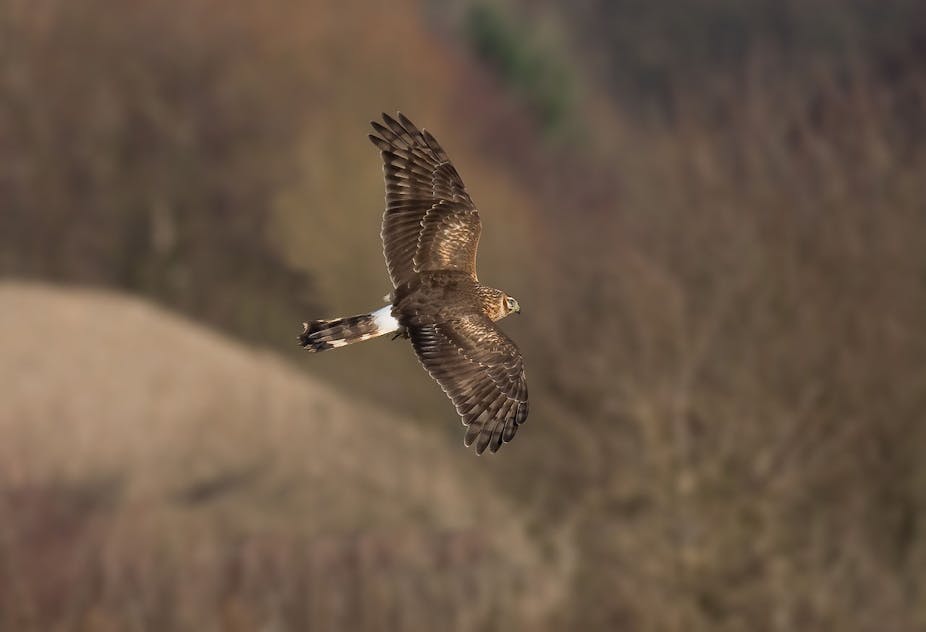Across the open heather moors of upland Britain, last-minute preparations are being put in place for the start of the red grouse shooting season on August 12. On average about 200,000 grouse are shot every year in England and Wales. Yet the management that makes such large numbers of grouse available for the guns in autumn is becoming increasingly contentious. The reason is that there is a growing and convincing body of evidence that suggests that birds of prey, or raptors, are being illegally killed by those who manage grouse stocks.
These accusations of illegal killings of birds such as harriers, falcons and eagles has given rise to a clash between those on both sides of the debate. While the main conservation and game shooting organisations claim to be keen to see an end to this illegal activity, they favour different approaches.
The conservationists tend to back the strengthening and enforcement of policy. For example, the RSPB demands that grouse shooting be licensed, so that a licence may be revoked should illegal activity be detected. Mark Avery, the former head of conservation science at the RSPB, has gone further and demanded that grouse shooting be banned. There is a day of protest set for August 10, and Marks & Spencer recently found themselves in the protesters’ sights for their plans to sell grouse in their stores.
In contrast, supporters of red grouse shooting claim that the land management associated with it has benefited a range of species, as well as bringing income and jobs into remote rural areas. They wish to see some form of legal management of birds of prey. Feelings run high; many question why it seems to be a taboo to discuss the management of raptors and why the desire to increase the number of these birds should come before jobs and communities.
The hen harrier finds itself at the epicentre of this conflict. The species has virtually disappeared as a breeding bird on intensively managed grouse moors – killed because of its efficient hunting of grouse. One of the features of the harrier is that it is not particularly territorial, so on some grouse moors it can breed at levels that lead to significant financial losses for those involved.
So what is the best way of resolving this problem? A shooting ban would certainly lead to a change in how large swathes of our uplands are managed. However, the costs and benefits of this change for the communities, predators and other species would depend on what it is replaced with. Such an approach would also inevitably anger many of those involved in land management and possibly damage the long-term relationships between hunters and conservation organisations.
Could the management of harriers provide a solution? A forthcoming population modelling study due to be published in the Journal of Applied Ecology explored one approach. The study highlighted the densities at which harriers could co-exist with driven grouse shooting through a quota or brood management scheme.
The idea is simple: once numbers go beyond some agreed level the chicks would be moved into captivity until ready to fly, when they would be released to rejoin the wild population. It may sound an unusual way of managing a wild species, but there is a precedent for it. In continental Europe, harriers breed in agricultural crops and are often killed if they aren’t flying before the combines harvest the crop. Instead, harrier chicks are taken into captivity before harvesting and subsequently released. This approach could allow the co-existence of harriers and grouse without recourse to illegal killing, but it would need to be tested in the field.
The problem is that the conservation movement are nervous because of the precedent this approach sets for active management of birds of prey – even if it ultimately led to more harriers. They argue that any discussion around techniques that would affect birds of prey should only take place once harriers are allowed to breed freely on grouse moors. Unsurprisingly, grouse managers will only trial such a scheme if there is an agreed quota, and an exit strategy that they can work towards.
We are at a crossroads, but it is not yet clear which way we are going to go: enforcement or management? While science has provided evidence, in the end the decision will – as is so often the way – depend as much on political, moral, social and economic arguments as it does on science.

